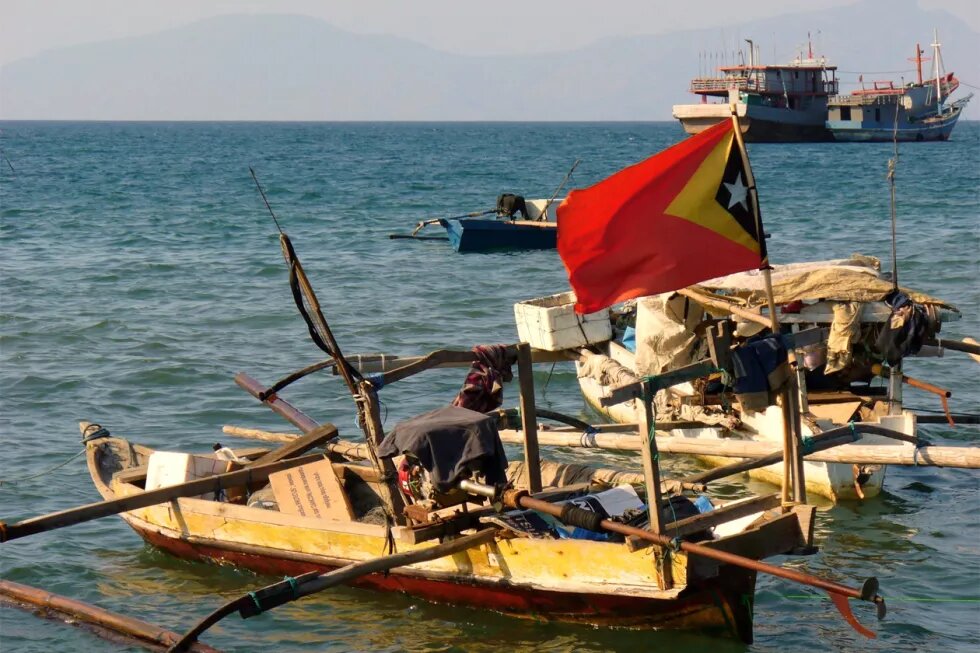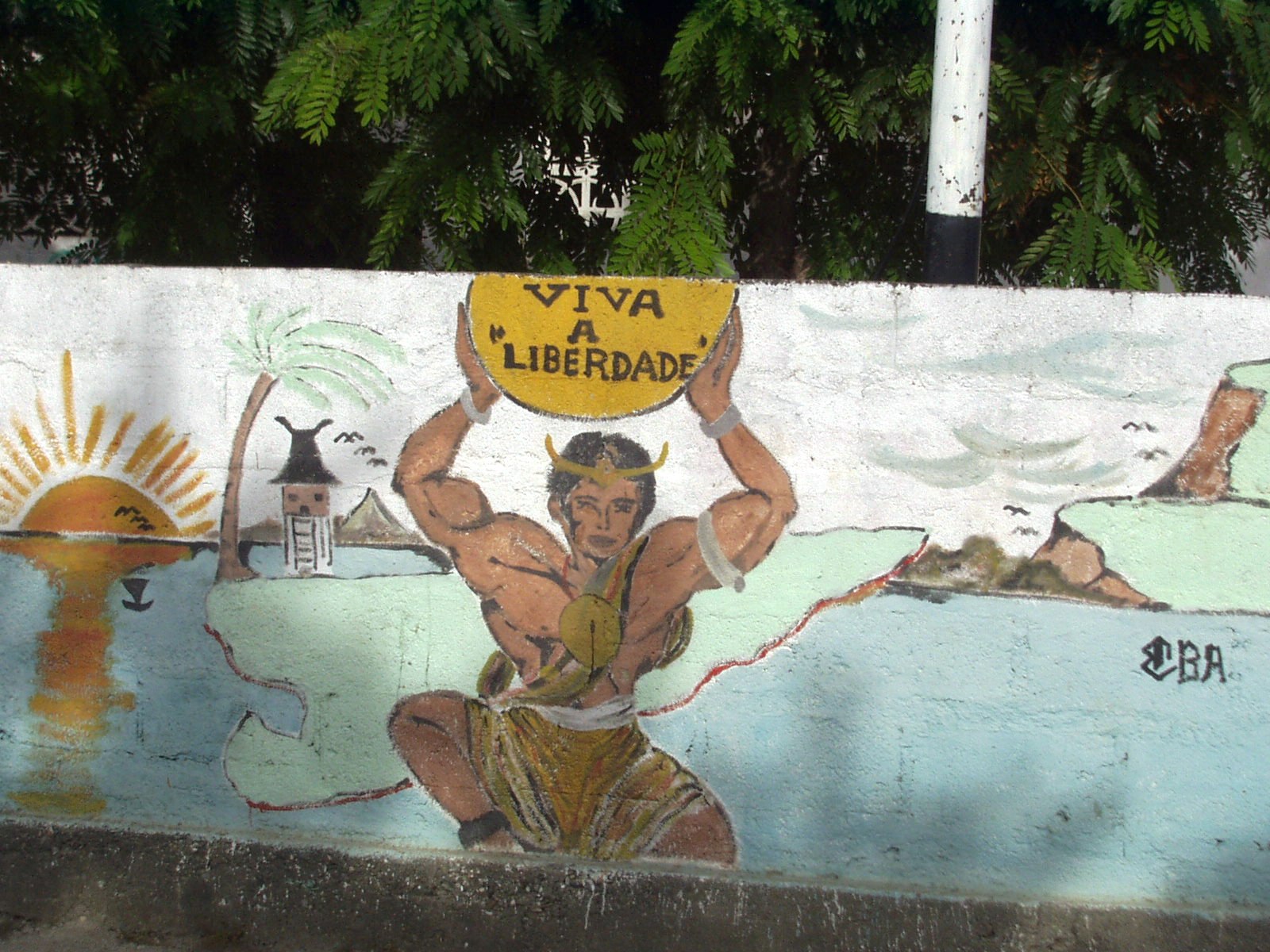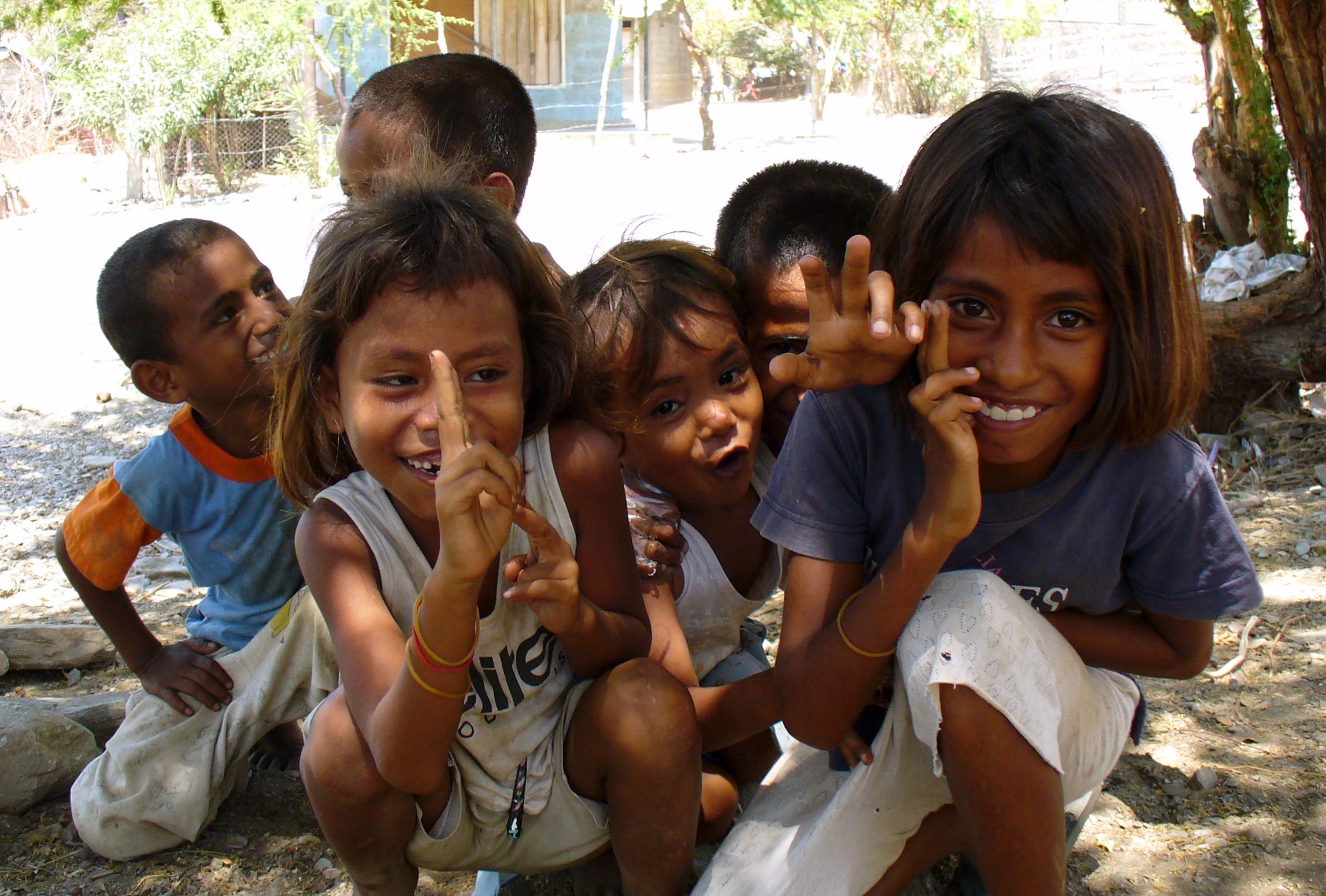
Obtaining ASEAN membership has been one of Timor-Leste’s foreign policy goals since 2002. This article discusses the current dynamic in Timor-Leste and what it means to be an ASEAN member. This is based on the domestic context that shapes Timor’s interests. Many commentators have taken a position in advocating for Timor’s membership based on short-sighted policies. At the same time, ASEAN continues to argue that Timor "does not have the capacity”. This article goes further by asking how Timor-Leste can benefit from this membership and what the necessary conditions are for Timor to do so.

Challenges of Timor’s Accession to ASEAN
ASEAN is celebrating half a century of its establishment this year. Many have voiced criticism regarding ASEAN’s lack of commitment to democracy[i], human rights[ii] and the meaning of ASEAN to marginalized groups. Nonetheless, ASEAN is viewed as an alternative platform for discussion among its members. Its success is based on the argument that it reduced tension and mistrust among its members. ASEAN differs from the EU in many ways. The members of European Union are less diverse compared to ASEAN. ASEAN member states are diverse in their histories, religions, cultures, identities, and even in their degrees of mistrust among members. In light of this diversity, building trust poses a challenge.
Timor-Leste cannot avoid the existence of ASEAN. Regardless of being the members or not, Timor-Leste cannot negate the geographical reality. As one of the foreign policy guidelines states, “we can choose our friends and partners, but we cannot choose our neighbour.” Realizing that, Timor-Leste has continually and consistently expressed its aspiration to join ASEAN. This aspiration was formalized in 2011 when Timor-Leste submitted its application to the Association. Alongside the process, Timor has done some efforts to materialize its aspiration. At the diplomatic level, aside from submitting a formal application, it has acceded to the Treaty of Amity and Cooperation. The most obvious one is establishing embassies in all ASEAN countries. Assessments of the Timor-Leste’s readiness is also has been undertaken. Several assessments also have been conducted on the Timor’s readiness to join the groups. Three were conducted by the ASEAN and another assessment was conducted by Timor-Leste in partnership with JICA and ADB. The results of the ASEAN-led assessments on Timor-Leste is not yet publically shared by ASEAN. At the domestic level, outreach activities are carried out to socialize it. The journalists from the region are also invited to visit Timor, and ongoing engagement with Civil Society. This nationwide outreach and awareness program conducted by the government is aimed at introduced ASEAN to the public especially people at the community level so that people are engaged in the preparation process for eventual membership in ASEAN.
These efforts have failed to convince ASEAN members to approve its application. The most recent formal position is that Timor’s application is under the examination from the senior official and ASEAN is committed to assisting Timor in term of capacity building. While the argument can be true, it is also narrow in focus. It is based merely on the bureaucracy level. ASEAN’s concerns cannot be played down. For such organization, it requires an effective bureaucratic capacity to execute regional agreements. As one of the high-level diplomats told, it does not mean that the Ministry of Foreign Affairs to have many staffs. It means that all bureaucracy levels are capable of coordinating and to executing the agreements. Unfortunately, as recently revealed by the outgoing President of the Republic, many of the MoUs signed by Timor-Leste have not been implemented. Previously, political stability was also used as the basis. However, the specific case was merely about 2006 crisis. Some recent commentators argue that ASEAN is not ready yet to accommodate democratic country like Timor-Leste into the region. Timor’s presence can be seen as a threat to ASEAN's policy of non-intervention and consensus approach.

Domestically, gaining ASEAN membership is presented as a national cause. On the surface, it seems that everyone understands the long-term impacts and is in agreement. However, not everybody is on the same page when it comes to their understanding of the free market. Discussions on the street might offer a helpful hint. During the last few years, Chinese migrants have taken over small business opportunities from the Timorese. Indonesian contractors have also benefited from multi-million government contracts. A great deal of labor from Indonesia and the Philippines are also present in Timor. These have created a sense of marginalization among some Timorese as they feel that economic opportunities have taken over by the foreign workers who come under tourist visas. These concerns are not specifically an obstacle in obtaining ASEAN membership, but are indicative of local attitudes surrounding the challenges that future economic integration might pose. This sense of being marginalized may intensify as people do not perceive the benefits of this development. When economic opportunities are scarce, people use immigrants as a scapegoat. This provides good conditions for smart politicians to capitalize on such issues during elections.
ASEAN as an Economic Opportunity
ASEAN is an economic powerhouse. Optimistically, it would provide Timor with an opportunity to improve its current development, according to Jose Ramos Horta, the main architect of Timor’s foreign policy. According to Horta, gaining access to ASEAN will boost Timor’s economy by forcing the Timorese to be hardworking. ASEAN is indeed an economic opportunity. It is the sixth largest economy in the world, and the third largest in Asia[iii]. The total trade is over two trillion USD. 76% of this amount is extra-ASEAN trade[iv]. Intra-ASEAN trade only accounts for 24%, but in nominal terms, this is more than 500 billion USD. In addition, around 47.7% of ASEAN’s population is below the age of thirty. They are highly-urbanized, and many belong to the middle class. ASEAN is indeed a potential market[v].
Timor-Leste is seeking important opportunities, notably foreign investment and tourism. Theoretically, foreign investment is expected to fill the domestic financial gap. More important for Timor-Leste, however, is technology and know-how. Right now, the most visible foreign investments are TL Cement and Heineken. Financial services like Indonesian Mandiri and Bank Rakyat Indonesia, as well as Australian New Zealand Bank are also present. ASEAN is a tourist destination as well as a source of foreign investment. In 2015, ASEAN attracted 120 billion USD in the form of foreign direct investment. A larger part of this investment was intra-ASEAN[vi].
The tourism sector has always been seen as one of the alternative economic sectors for petroleum. According to the 2014 Asia Foundation Survey on travelers, the tourism sector is worth 14.6 million USD, which accounts for around 1% of non-oil GDP. Aside from its size, the survey reported that the travelers’ level of satisfaction was significantly high. If this sector could reach up to 100 million USD every year, it would be a significant contribution to Timor’s economy. Nominally, in 2015, there were more than 108 million tourist arrivals in ASEAN. 42% of them were intra-ASEAN tourists[vii]. Outside of ASEAN, China is the biggest single contributor, accounting for 17% of tourist arrivals within ASEAN. The 28 EU members account for 8.8%[viii]. Timor could be attractive in terms of its natural attractions and rich history. The challenge remains that Timor-Leste would relatively expensive for most ASEAN residents, given the currency it uses. Thus, it might appeal more to Australian tourists or members of the ASEAN middle class and above.
Current Development Issues
To what extent Timor will be able to benefit depends on domestic factors. Timor-Leste’s economy is excessively dependent on petroleum. More than 70% of its GDP and nearly 90% of the state’s annual budget is derived from petroleum. There are some positive trends, as private consumption is increasing. However, the public sector is still dominant through public consumption and investment[ix]. At this point, private sector activities are still dependent on the public sector. This is through small scale infrastructure, and providing services for the government.
Poverty is yet another challenge. Despite the decline, four out of ten Timorese are still below the national poverty line. Unemployment is relatively low, but the inactive population is extremely high, accounting for more than half of the productive age population. This presents economic, social and security issues. Timor-Leste is blessed with a high productive age population. Unfortunately, it has not been able to translate this into economic opportunities. Providing economic opportunities for a high portion of youth is an extremely difficult challenge, given the small size of the private sector. From the government’s point of view, only private investments can provide such opportunities, and foreign investment is part of that. So far, the government’s approach has primarily been to focus on physical infrastructure. The hope is that when infrastructure is improved, this will enable the private sector to grow, in turn, creating job stimulus.

In terms of human development, Timor-Leste has improved significantly during the last ten years. According to the 2015 Human Development Index, Timor-Leste ranked higher than Lao PDR, Cambodia and Myanmar[x]. However, dropout rates, truancy, and grade retention are indicators of low quality education. The basic conditions for students to learn, such as libraries, laboratories and even restrooms are still absent in the majority of schools. In addition, malnutrition remains high. The concern is that it will affect students’ capacity to learn and to be productive when they reach a productive age. Public spending on education and health is relatively low in a regional context. At present, Timor-Leste’s public spending on education is 9.2%, and health-related spending accounts for 5%[xi].
The quality of institutions and bureaucracy is another challenge. Institution refers to the rules and regulations that shape the way people interact with each other. It provides certainty and security to the people, including the investors. Timor-Leste is a democratic country. The Head of State and members of Parliament are elected directly through popular vote. It has been a peaceful country during the last ten years. The real issue is how to bring this peace and stability to real people’s lives. The tendency so far is that political stability has been based on an elite consensus. This has been criticized for undermining check and balance mechanisms, unequal distribution of resources as well as rent-seeking activities. At the same time, people who are in rural areas have not been included in this process.
Investors cannot be persuaded to invest in the domestic economy based on political stability alone. It also requires an independent judiciary system and effective bureaucracy. People need to have trust in the judiciary system to resolve conflict through legal mechanisms. The President of the Republic recently raised this concern in his dialogue with students from the National University. Corruption continues to be perceived by some as a serious issue, and exists in all levels of administration[xii]. It is the result of various problems, such as a weak check and balance system within institutions, the legacy of colonialism, culture and dependency on oil[xiii]. In the Doing Business Report 2017, Timor-Leste ranked 175th place out of 190 countries. Out of a score ranging from 1–100, 100 being the easiest to do business with, Timor-Leste’s scored 40.88, which is less than the regional average score, 61.97[xiv].Petroleum dependency has also created economic and political structures which operate in favor of an elite few in the capital through rent-seeking activities. Government policies also created very specific conditions in the private sector. They relied on government contracts, were consumption-based and were Dili-centric.
Timor’s bureaucracy has expanded rapidly, financed through petroleum revenue. It is the biggest employment sector in the formal economy. As it expands, it becomes costly to maintain, and imposes a burden on the state. Right now, everything remains intact, because the savings from petroleum are there. However, the future is stark. In 2015 alone, Timor’s recurrent expenditure was 34% of its overall GDP, or 66.4% of non-oil GDP. Even the domestic revenue is not sufficient to cover the salaries of all public employees. At the same time, complaints about the quality of public services is a common issue, even when it comes to basic services like getting a driver’s license, an identification card or a passport. This is reflected in recruitment as well as in the way it operates. To some extent, this is viewed as part of the patron–client network. As bureaucracy increasingly turns towards vested interests, efforts to change it become more challenging.
Finally, infrastructure remains a relevant issue in Timor-Leste. The country suffered total devastation when Indonesia left Timor-Leste in 1999. Despite billions of dollars of aid flowing to Timor since then, infrastructure had hardly been improved until 2008, when Timor-Leste was able to invest extensively in the infrastructure sector thanks to petroleum. Around 40-50% of annual state expenditure goes to infrastructure. The most significant sectors are electricity and the national road network. However, the electricity sector is highly subsidized. Around 80% of its operational costs are still subsidized by the state budget. The national road network is being constructed through a loan. The concerns raised by many organizations, including the World Bank and the local Think Tank Lao Hamutuk, are how to maintain the existing infrastructure and its investment return. At this point, saving from petroleum revenues still enables it. The question is what happens when the account is drying up.
What the Future Holds
Thinking of Timor-Leste’s accession to ASEAN is a complicated issue for Timor-Leste and for ASEAN. Reading from ASEAN’s official position, the issue is not about getting in. The real issue is when Timor gets in, how Timor can play constructive roles. To some extent, these are a valid argument, given the development challenges that the country is facing. Thus, the easiest the decision is not to allow Timor to be part of the regional organization.
For Timor-Leste, it already made the decision to take part in the association despite the development chalenges. Such decision informed by the assumption that Timor-Leste cannot isolate itself from regional blocs and its geographical reality. The expectation is that, by joining the bloc, it will enable Timor-Leste to take some benefits that the region provides. However, as a study by the Ministry of Finance and Asian Development Bank pointed out[xv], the long-term impacts will depend on the domestic capacity address the business constraints. And the development issues that were discussed above obviously will determine to what extent Timor-Leste will benefit out of it. Regardless of ASEAN’s decision, Timor-Leste needs to improve the efficiency in the bureaucracy sector. It also needs to develop the domestic economy and to invest more on its people. These are the challenges that Timor has to address regardless of ASEAN’s decision.
For ASEAN, its position on Timor’s accession to the regional grouping, while can be seen as the careful moves, it also can be seen as the indecisiveness of ASEAN when it comes to regional issues. The development challenges that Timor is facing is the result of the long history of the Portuguese colonialism and Indonesian military occupation. Like many other ASEAN members, the legacies of the history of colonialism still persist. Despite the challenges, Timor-Leste has been consistent in conveying its desired interest of joining ASEAN and continued to consolidate its internal preparations. It may be easier for Timor-Leste to get into ASEAN; it certainly requires both commitment and capacity to be able to play constructive roles once being admitted in the bloc. For ASEAN, it is easier to delay, if not impede. But ASEAN also cannot simply ignore Timor’s geographical existence.
REFERENCES
[i] Khoo Ying Hooi, ‘ASEAN at 50: A New Test for Democracy in Southeast Asia’, http://thediplomat.com/2017/05/asean-at-50-a-new-test-for-democracy-in-southeast-asia/
[ii] Amnesty International, Timor for ASEAN to take Human Rights Seriously, https://www.amnesty.org/en/latest/news/2017/02/time-for-asean-to-take-human-rights-seriously/
[v] Ibid.
[viii] Ibid.
[xiii] Ibid.
[xiv] http://documents.worldbank.org/curated/en/679141478682693475/pdf/109995-WP-DB17-PUBLIC-Timor-Leste.pdf
[xv] ADB, Country Partnership Strategy 2016-2020, https://www.adb.org/sites/default/files/linked-documents/cps-tim-2016-2020-rcia.pdf




